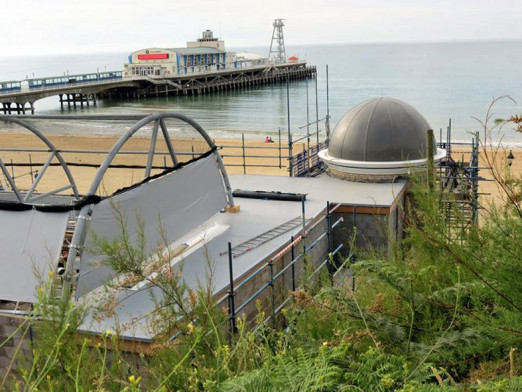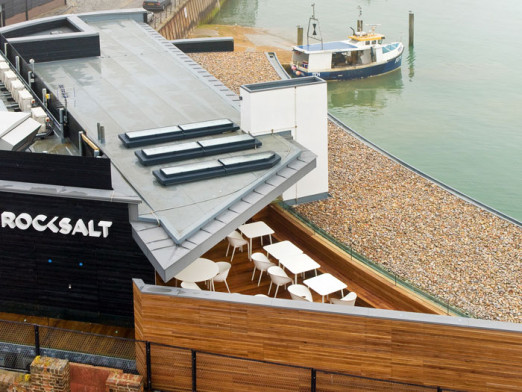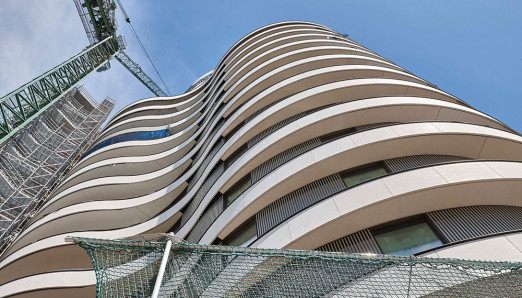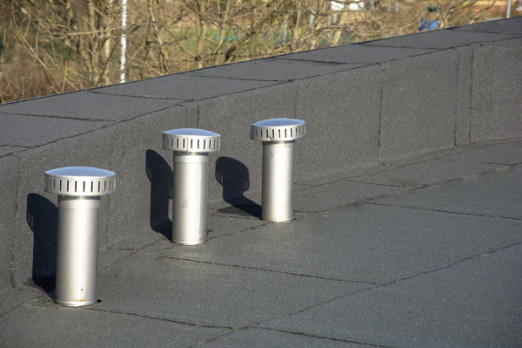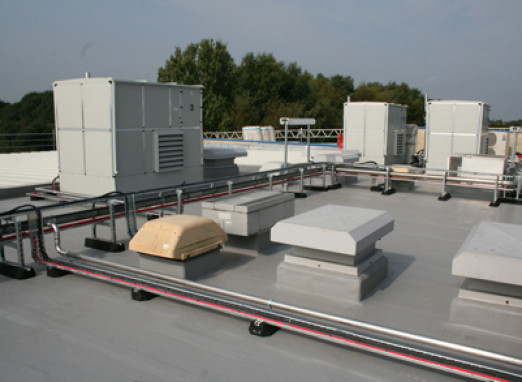One of the most common questions our specification managers are asked is, ‘what should the upstand be on a flat roof?’. This question is frequently followed by, ‘what if I haven’t got 150mm?’. This article is about why upstands exist and how you can avoid asking the second question. SIG Design & Technology’s technical director Stephen Cleminson highlights best practice for upstand design.
Why do we need flat roof upstands?
The requirement for flat roof upstands is set out in the British Standard. British Standard BS 6229:2003 Flat roofs with continuously supported coverings(Section 7 page 12) requires that:
“The design of drainage falls should ensure that the continuity of the waterproof covering is maintained for a vertical height of 150mm above the finished roof level at all abutments, door openings and parapets.”
It is worth noting that whilst BS 6229 is under review, the 150mm rule is not expected to be altered.
Upstands acknowledge the fact that rainwater can build up on a roof during heavy storm events. If you just took your waterproofing up to the edge of the roof and didn’t have an upstand, the local construction would get saturated. If you were interfacing with rainscreen cladding without an upstand and overlap, water will just run into the building.
An upstand, be it against a parapet, penetration or facade, ensures that the waterproofing does its job and that exposed brickwork, external facades or other building elements are not flooded or saturated. Upstands also help protect against rainwater bouncing up off the finished roof surface. There is no great reasoning in the documentation as to why the rule is 150mm – it has probably been adopted from previous standards over the generations.
The upstand question cannot be looked at in isolation, so we need to consider the whole situation.
How to deal with level thresholds and exceptions to the 150mm rule
We are often asked, “How do I deal with level thresholds, when IKO & SIG state 150mm upstand minimum?” BS 6229:2003 goes on to say:
“For inverted roofs, those with overlaid paving, or garden roofs, the finished roof surface is the upper surface of the ballast, paving slabs or growing medium.”
The SPRA (Single Ply Roofing Association) Design Guide 2016 describes an exception regarding balconies and terrace access (p29: Access to Balcony or Terrace):
“The requirement of a 150mm waterproofing upstand is fundamental to reliable detailing. However, working with building insurers and the residential sector, SPRA is aware of the requirement for unimpeded access to balconies and roof-level terraces in many designs. In this situation only, the requirement has been reduced to 75mm at the opening, provided that the following conditions are met:
- Rapid removal or rainwater across the width of the opening, by including a proprietary drainage channel in front of the threshold.
- The waterproof membrane extends 150mm height in the door reveal and roof/abutment wall adjacent.
- The waterproof membrane flashing extends fully below the door frame bottom rail and is sealed to it.
- A horizontal gap of minimum 10mm is maintained between frame front edge and drainage channel.”
NHBC, who set standards and warrantee new homes, also provides special guidance. In NHBC Standards 2016 Chapter 7.1 Flat roofs and balconies NHBC acknowledges the need for flush thresholds, and in cases such as disabled access that there are exceptional circumstances. However, certain other criteria need to be achieved where these reductions are noted.
At a door threshold, NHBC has agreed that locally a 75mm upstand height is acceptable, but either side must step up, and drainage must fall away from the “pinch point”. Note also the requirement from NHBC for an overflow if the waterproofing covers an enclosed area with an upstand all around – such as on a balcony or roof terrace with a parapet. The overflow must be a minimum 25mm below the top of the 150mm upstand height.
What if you don’t have 150mm for a flat roof upstand?
If your design does not allow for 150mm upstand in all cases where the exceptions don’t apply, you run the risk of falling foul of building control or third party insurers such as FM or NHBC. If they don’t sign off the waterproofing there can be issue obtaining mortgages, for example. Here are some examples of how to deal with the situation if you find yourself without the requisite 150mm.
Introduce mitigation
You may be able to introduce mitigation into your design such as with localised drop gutters, but if you eat into the insulation to achieve this you may create a cold spot with condensation issues, or you might not achieve the required U-values in some areas. It is a compromise to rely on average U-values and they should not be putting your design at risk.
Change the insulation type
It may be possible to change the insulation type to one with a better U-value (for example changing tissue-faced to foil-faced) for a better performing insulant. But you do need to be aware of the knock-on effects. For example, say you’d decided to use a bonded membrane – which traditionally uses tissue faced insulation, designed at the correct falls (designed at 1:40 to achieve 1:80 everywhere) which resulted in a pinch point where the upstand height available is then only 140mm. This would be non-compliant.
We could look at changing the insulation from tissue-faced to foil-faced, because it has the better U-value. However, most membranes don’t bond to foil faced insulation, (though some do – talk to us) they only bond to tissue faced, so you’d have to change the method of attaching the membrane from bonded to mechanically fixed. Remember to use thermally broken tubes for fixing.
Change the insulation arrangement
As another alternative to overcome a shortage in the 150mm required in your design for the upstand heights we could consider an under and over insulation solution; to move part of your insulation to below the Vapour Control Layer, where possible. But you do need to be careful that you do a full U-value and interstitial condensation risk analysis to ensure that moving some insulation to gain height will not create an interstitial condensation risk. Make sure you do the sums so as to not create another even worse problem from your solution.
Convert the upstand into a raincheck
If you have a roof at the required falls and an interface at a door threshold compliant with the NHBC guidelines, but at two sides you only have the ability to have 75mm (for example due to planning), what to do then? You could take the waterproofing up 75mm, right across the cavity and have a drip across the parapet. By going continuously over the parapet and into a drip, the upstand is only acting as a raincheck.
In Conclusion: Don’t leave upstands too late!
These examples show that you need an all-round knowledge of roof design to know what can be done with layers and levels and products to help you achieve compliance in any particular situation.
Most flat roof upstand problems arise from restrictions in height, such as planning restrictions, which cannot be avoided. They often arise because the roof is considered too late in the process, when decisions about the rest of the design cannot be changed (or are already built). Imagine if we could design a building from the 150mm upstands down, rather than up from the foundations? In some cases, if we think about the requirements of the roof in time, we may be able to do something incredibly simple, such as knock 20mm off the ceiling height, to give the required 150mm.
Think the design through completely and compliantly, so that when you get to the top of your project you don’t run out of space.
More information
Many thanks to IKO plc for giving us permission to publish some of its details. Remember that these are standard details and may not be suitable for your project. Consult us for design advice to be on the safe side.
Need to know more? Find out more about our holistic approach to roof design and the 8-steps service we provide free of charge to specifiers.

